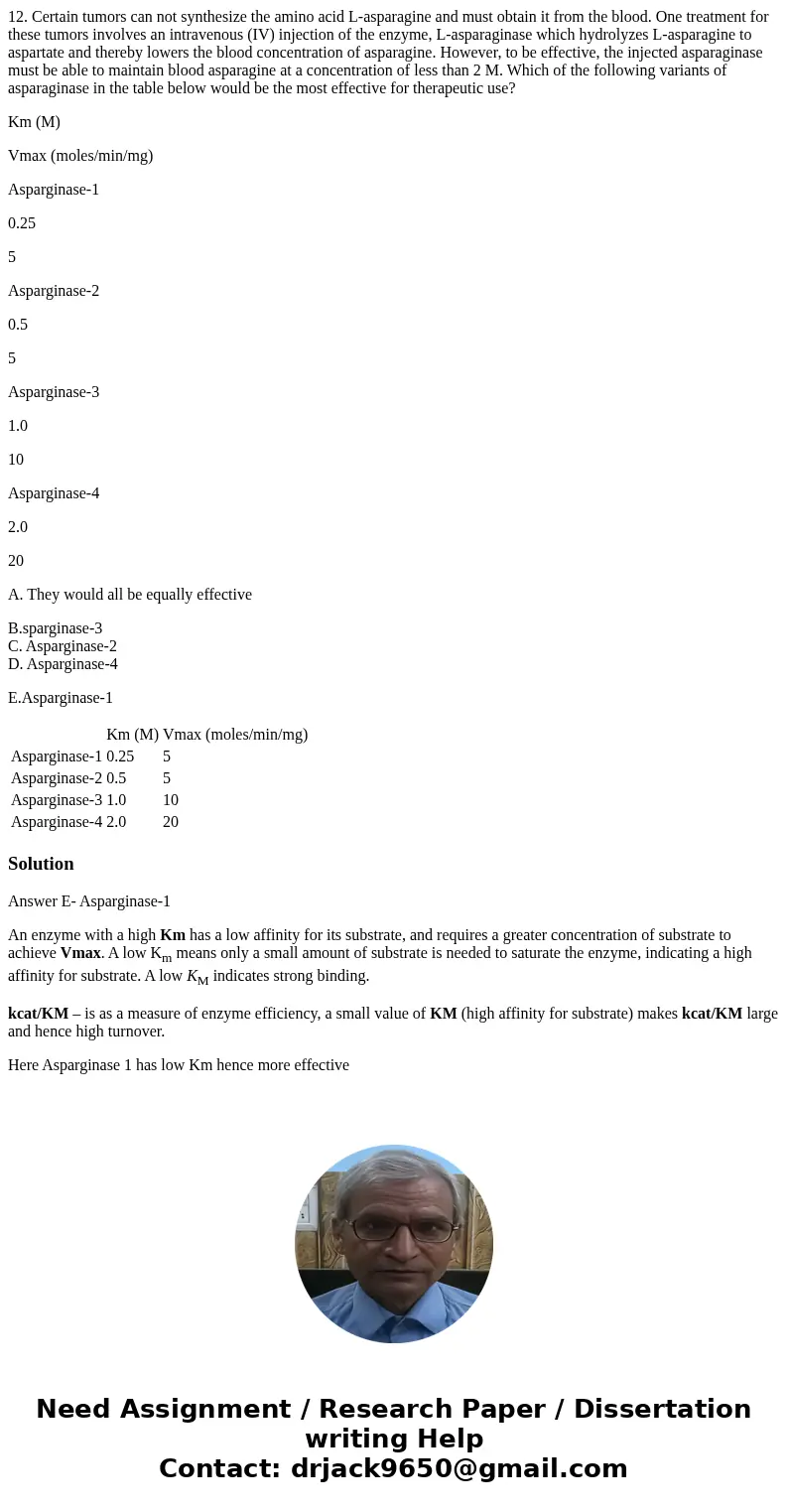12 Certain tumors can not synthesize the amino acid Lasparag
12. Certain tumors can not synthesize the amino acid L-asparagine and must obtain it from the blood. One treatment for these tumors involves an intravenous (IV) injection of the enzyme, L-asparaginase which hydrolyzes L-asparagine to aspartate and thereby lowers the blood concentration of asparagine. However, to be effective, the injected asparaginase must be able to maintain blood asparagine at a concentration of less than 2 M. Which of the following variants of asparaginase in the table below would be the most effective for therapeutic use?
Km (M)
Vmax (moles/min/mg)
Asparginase-1
0.25
5
Asparginase-2
0.5
5
Asparginase-3
1.0
10
Asparginase-4
2.0
20
A. They would all be equally effective
B.sparginase-3
C. Asparginase-2
D. Asparginase-4
E.Asparginase-1
| Km (M) | Vmax (moles/min/mg) | |
| Asparginase-1 | 0.25 | 5 |
| Asparginase-2 | 0.5 | 5 |
| Asparginase-3 | 1.0 | 10 |
| Asparginase-4 | 2.0 | 20 |
Solution
Answer E- Asparginase-1
An enzyme with a high Km has a low affinity for its substrate, and requires a greater concentration of substrate to achieve Vmax. A low Km means only a small amount of substrate is needed to saturate the enzyme, indicating a high affinity for substrate. A low KM indicates strong binding.
kcat/KM – is as a measure of enzyme efficiency, a small value of KM (high affinity for substrate) makes kcat/KM large and hence high turnover.
Here Asparginase 1 has low Km hence more effective

 Homework Sourse
Homework Sourse